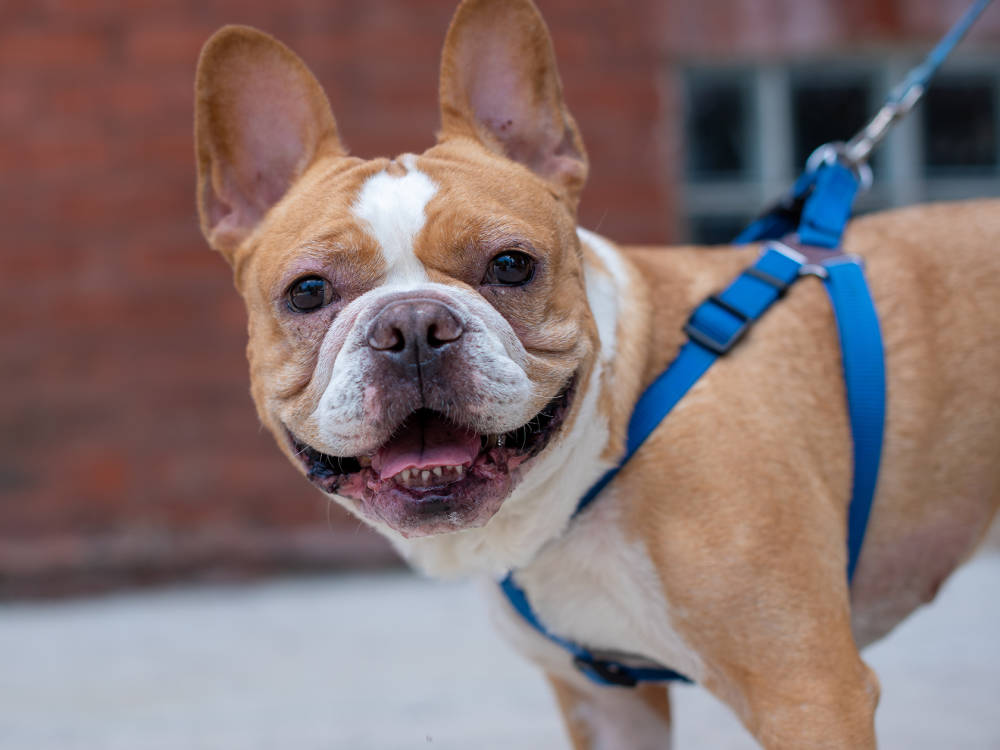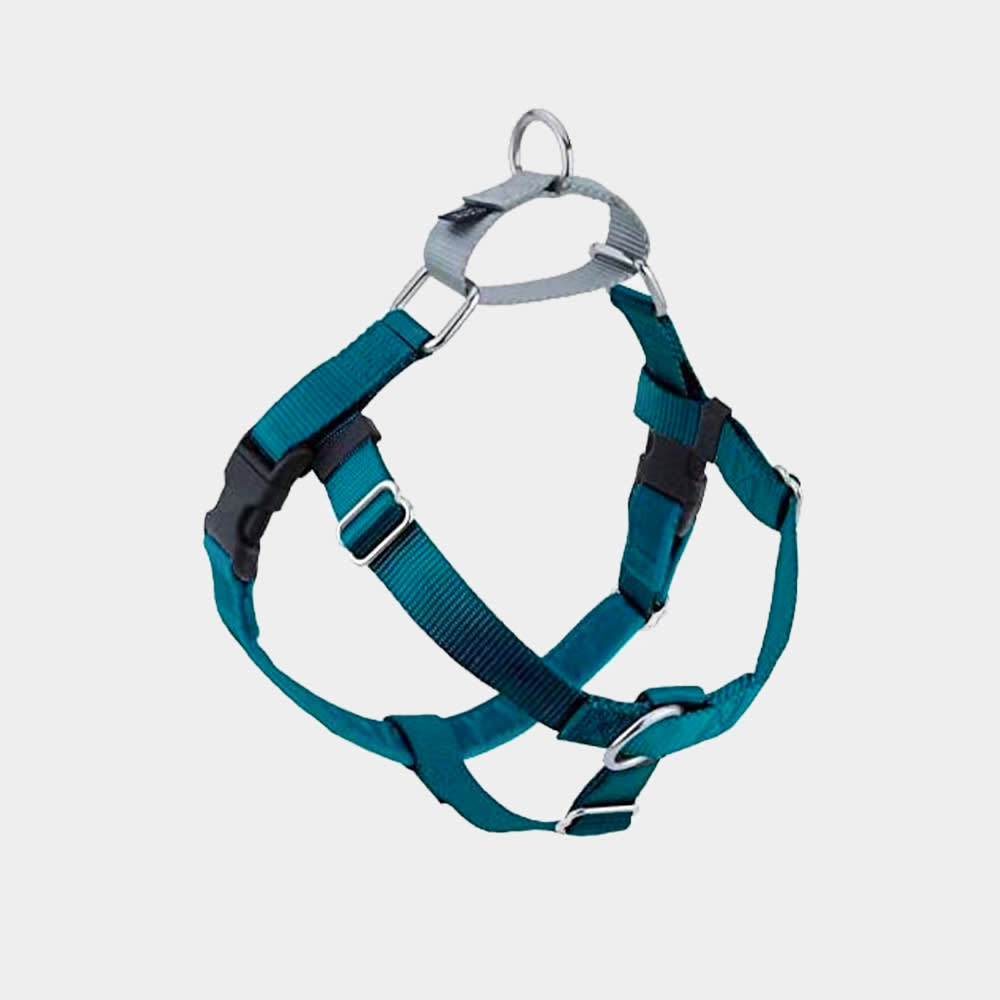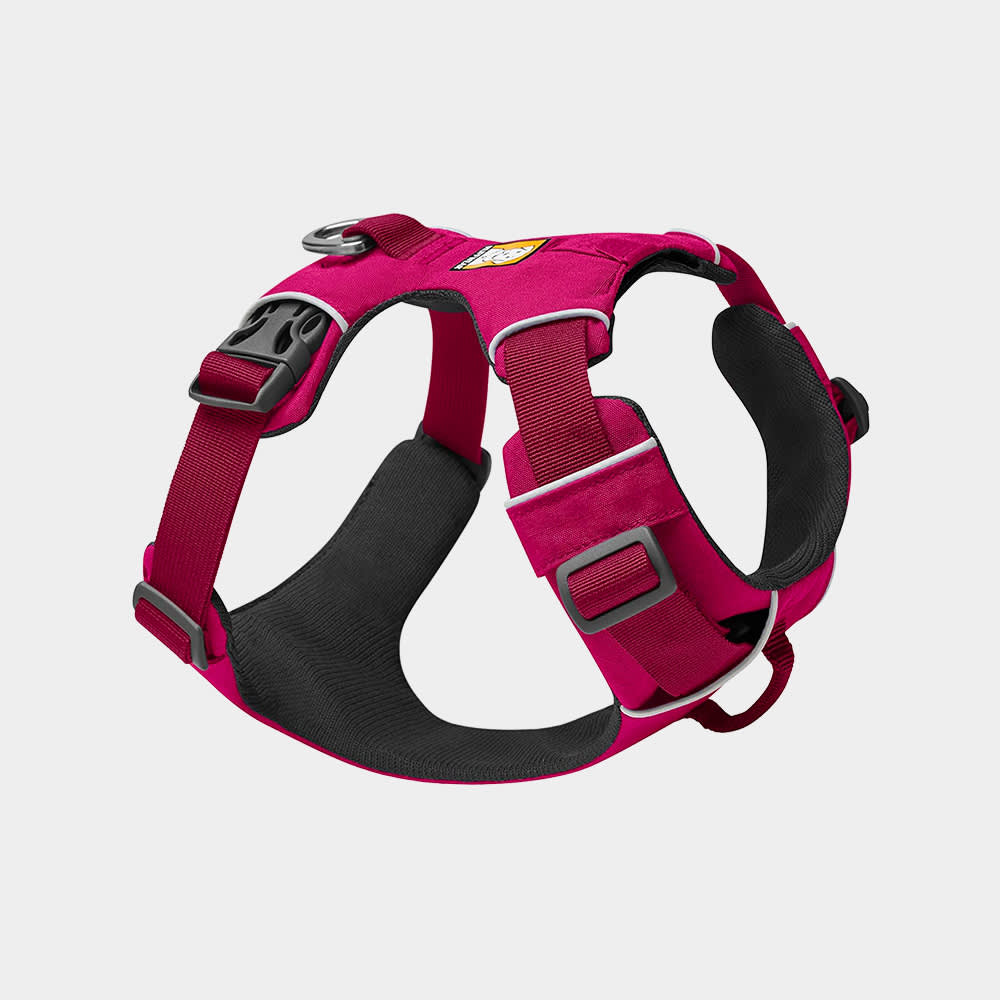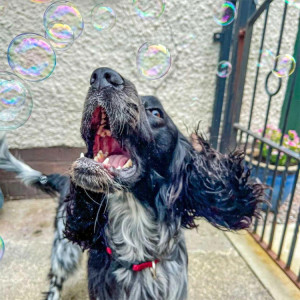Strap In: Dog Collars vs Harnesses
Style and safety don’t have to be mutually exclusive

share article
Accessorise, accessorise, accessorise. But hold on, because when it comes to collars and harnesses, function is much more important than fashion. This means that despite how cool sequinned harnesses look on Timothée Chalamet, such trappings may not keep your pup safe on the street. We break down all the options below – taking into account advice from a vet – so you can decide what’s best for your dog.
First, get a collar
All dogs need to wear a collar – that’s where you’ll attach your contact details in case they get lost. But many new rescue dogs aren’t used to being walked on a leadopens in a new tab yet, so if yours criss-crosses across the pavement, you’ll need a collar that offers more control than a traditional flat one. Also, if your dog is anxiousopens in a new tab and easily spooked on walks, or able to slip their head out of the collar because of a funny head-to-neck ratio (cute!), you should look no further than a martingale-style collar, which will tighten if and when they try to back out of it.
“If you’ve got a dog that might be prone to nip or lash out at strangers, they would do best with a head halteropens in a new tab, which fits over the muzzle and hooks behind the ears,” says vet Dr Elizabeth Shines. “If you don’t control the dog’s head, you generally don’t control the dog, either.”
Then maybe a harness, too
It’s important to consider any health issues that can be made worse by a collar. “If your dog has any type of spine/neck malalignment, tracheal issue or heart condition, you’ll want to stick with a harness to avoid putting pressure on the neck,” says Dr Shines. Long-bodied breeds, like Dachshunds, should also never be walkedopens in a new tab on a collar because they’re prone to spinal issues. Neither should small puppies that are still developing.
Harnesses often offer better control, especially if a dog is very strong. Strappy versions are best for dogs who run hot, but they can dig into the skin if you’ve got a puller. There are also harness vests that don’t chafe as much, but these can be bulky and constricting. Where the clips are positioned is worth considering, too. Back-clip harnesses are great for avoiding lead-leg tangles but can feed an instinct to pull (picture huskies mushing a sled). Vice versa for those with front-clips, which can curb pulling, but make your dog more likely to trip up on the lead. Dr Shines says that “for a healthy dog, it comes down to your and your dog’s preference”, so be prepared for some trial-and-error (and save receipts).
Btw, our editors (and their pets) picked out these products. They’re always in stock at the time we publish, but there’s a chance they’ll sell out. If you do buy through our links, we may earn a commission. (We’ve got a lot of toys to buy over here, you know?)

Amy Marturana Winderl
Amy Marturana Winderl is a freelance writer and editor based in central New York. Her work has appeared on SELF, HealthCentral, Martha Stewart Living, LIVESTRONG, Outside, and more.
Related articles
![Bullmastiff puppy chewing on a purple ring chew toy]() opens in a new tab
opens in a new tab11 Tough Toys for Power Chewers
Veterinary behaviourist Dr Valli Parthasarathy recommends the most durable dog toys for destructive players
![dog biting bubbles]() opens in a new tab
opens in a new tabYour Dog Will Lap Up These Meat-Flavoured Bubbles
You may think they smell disgusting, but your dog will love them
![Shiba Inu dog wearing a rainbow raincoat on a path outside while on a leash held by his pet parent, a person wearing black and gray]() opens in a new tab
opens in a new tabKeep Your Dog Dry With These Stylish Raincoats
Where function meets fashion
![Greyhound dog lying on top of couch looking out of a window]() opens in a new tab
opens in a new tab6 Calming Products That Help My Dog’s Anxiety
Compression vests, interactive toys and pheromone sprays will be game-changers for nervous pups









